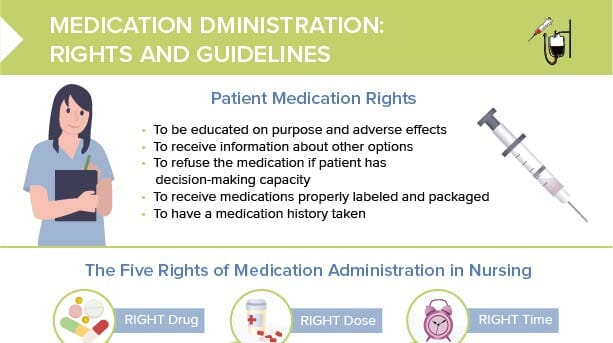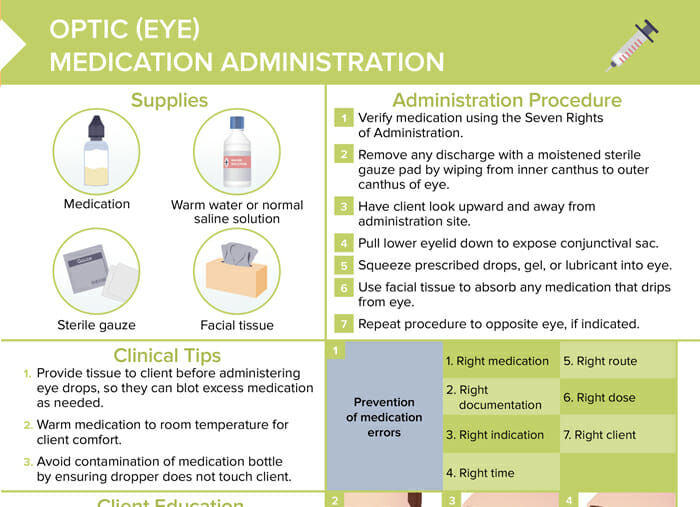What are optic medications?
Optic medications are drugs that are used to treat eye conditions. They are often administered in the form of eye drops. A few common eye medications in the form of drops include: corticosteroid eye drops for inflammation, artificial tears to relieve dryness, antihistamine eye drops to relieve allergy symptoms, and antibiotic eye drops for eye infections.
Client education points about eye medication
- Explain indication, action, dose, frequency, and duration of each medication prescription to client.
- Teach eye drop self-administration and have client demonstrate technique to ensure understanding.
- Encourage client to blink and blot gently after administration. They should avoid pressing on eye or squeezing eyes shut, which can extrude medication from eye and inhibit absorption.
How to put in eye drops
Supplies needed
- Medication
- Warm water or normal saline solution
- Sterile gauze
- Facial tissue
Clinical tips
- Provide tissue to client before administering eye drops, so excess medication can be blotted as needed.
- Warm medication to room temperature for client comfort.
- Avoid contamination of the medication bottle by ensuring dropper does not touch client.
Procedure
- Verify medication using the Seven Rights of Administration.
- Remove any discharge with a moistened sterile gauze pad by wiping from inner canthus to outer canthus of eye.
- Have client look upward and away from administration site.
- Pull lower eyelid down to expose conjunctival sac.
- Squeeze prescribed drops, gel, or lubricant into eye.
- Use facial tissue to absorb any medication that drips from eye.
- Repeat procedure to opposite eye, if indicated.
Related videos
How to put eye drops in a toddler
- Be patient and gentle: Take a few moments to try and calm the child to make them comfortable and reduce struggling. Communicate that the procedure is painless. If needed, use a distraction.
- Bring eye drops to room temperature (too cold can be uncomfortable, too warm can cause them to evaporate too quickly).
- If the child gets eye drops in their mouth, rinse with water immediately.
- Specific techniques that can help:
- Closed-eye technique: For toddlers that struggle or can’t keep their eyes open, hold the dropper directly over the closed eyelid and let the medication seep into the eye.
- Butterfly technique: Hold dropper between thumb and index finger, with tip of dropper facing down. Gently pull down lower eyelid with your other hand. Place tip of dropper in the corner of the eye close to the nose and administer eye drops.
How long to wait between eye drops
If a client is prescribed multiple optic medications, a wait of five minutes between administration of different types of eye drops is required.

